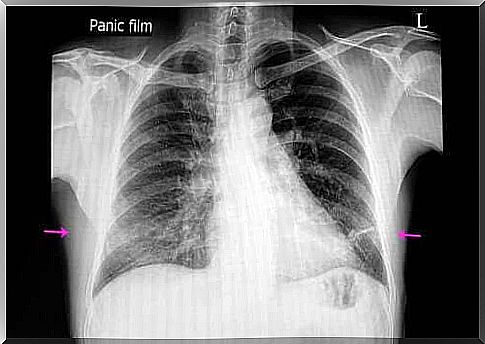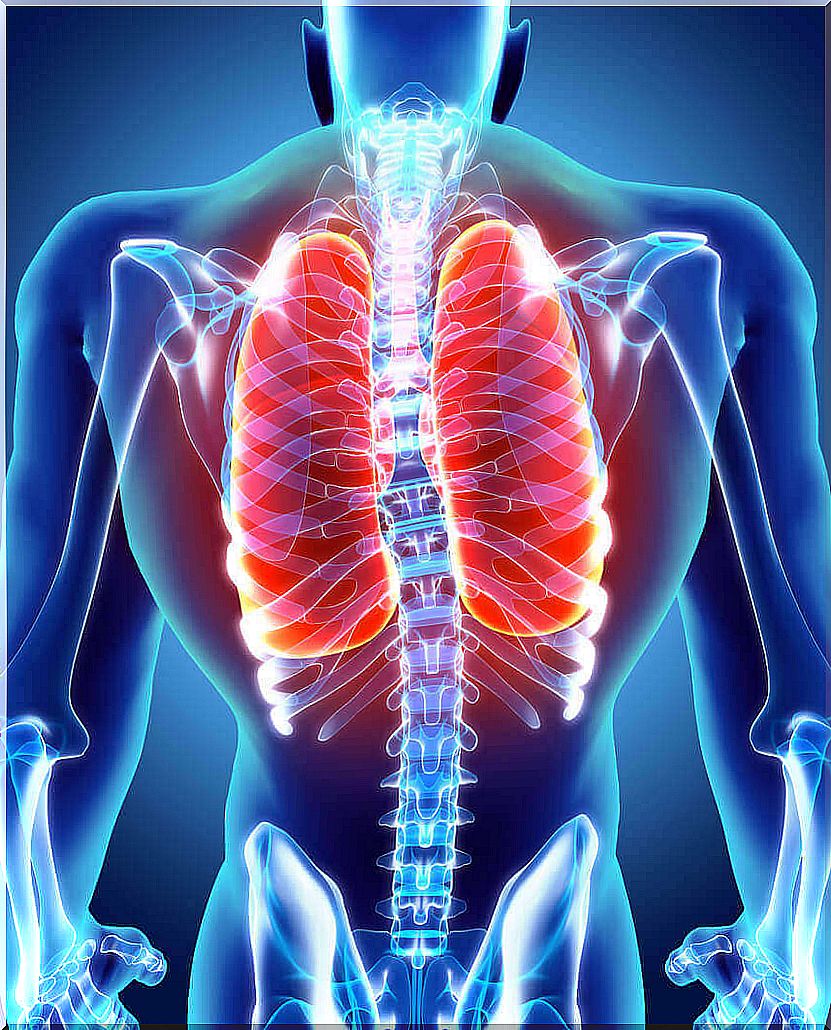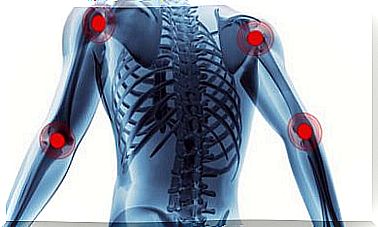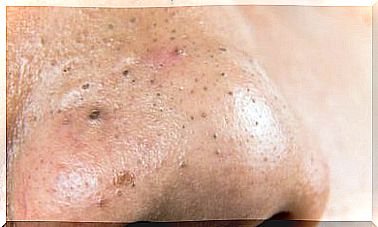Atelectasis, Symptoms And Causes
This condition can result from trauma, after general anesthesia or from other causes. In today’s article we are going to tell you all about the symptoms and causes of atelectasis.

The word atelectasis comes from atele-vs (incomplete) and éktasis (extension). It is a disorder in which part of the lungs becomes evacuated and collapsed . Today we are going to tell you all about the symptoms and causes of atelectasis .
Incidentally, this condition can affect the entire lungs or just a part (lungs). It generally occurs as a result of an airway blockage or pressure on the outer part of the lungs. The alveoli either empty or fill with fluid.
Anyway, this is a common complication when it comes to certain respiratory problems. For example, it can occur in patients with cystic fibrosis, tumors in the lungs, surgery with the chest open, etc. In fact, atelectasis can also occur when a person inhales a foreign object. Those who have atelectasis may have difficulty breathing .
In the following sections you will find out everything you need to know about this condition.
Symptoms of atelectasis

When talking about the symptoms and causes of atelectasis, we need to distinguish between atelectasis and the pneumothorax. A pneumothorax occurs when air escapes from the lungs into the chest . However, is a atelectasis a decrease in the amount of air in the lung along with a volume loss. With pneumothorax there is air in the pleura.
Atelectasis does not produce clear symptoms. Symptoms may be imperceptible, especially if it affects only part of the lungs or if it develops slowly. On the other hand, if a large number of alveoli are affected, the symptoms can be very serious. This also applies if the disorder develops quickly.
Symptoms of atelectasis include:
- Difficult breathing
- Troubled or superficial breathing
- to cough
- Panting
- Chest pain, especially if the cause is trauma or pneumonia
- Racing heart or hypotension (low blood pressure)
- Blue discoloration of the skin due to hypoxemia (lack of oxygen) due to decreased gas exchange
It is important to see a doctor, especially when breathing becomes increasingly difficult.
The causes of atelectasis
First of all, diseases caused by obstruction of the bronchi and bronchioles. It can also occur as a result of pressure on the outer part of the lungs.
In addition, one is general anesthesia another common cause. This changes the regular breathing rhythm and thereby impairs the exchange of air. Therefore, the anesthetic can cause the alveoli to empty. With major surgery, almost all people develop some degree of atelectasis.
To name the most common causes of atelectasis, we need to distinguish between obstructive and non-obstructive atelectasis.
The causes of obstructive atelectasis
- Foreign bodies : This is particularly common in children. Children tend to pick up small items, such as B. toy parts, inhale.
- Mucus plug : This is a build-up of mucus in the airways . It often occurs during an operation. It is difficult to clear the mucus when you cannot cough. This can also occur because many of the medications you take can reduce the depth of breathing. Therefore, the mucus tends to build up. Mucus plugs are common in people with cystic fibrosis and asthma.
- Tumors : A tumor in the airways causes them to become narrowed. This can lead to an obstruction.
The causes of non-obstructive atelectasis
In this case, possible causes include:
- Trauma : When trauma occurs, the pain decreases the depth of breath. This can lead to compression of the lungs.
- Pleural effusion : A pleural effusion is an accumulation of fluid between the lung membrane and the inside of the chest wall.
- lung infection
- Scars on the lung tissue: Injuries from lung diseases or surgery can lead to scarring.
Diagnosing the disease

A clinical examination and an X-ray are usually sufficient to diagnose atelectasis . However, there are a number of techniques that doctors can use to confirm the diagnosis or determine the severity.
These techniques include a CT (computed tomography) scan, bronchoscopy, ultrasound, and oximetry. Bronchoscopy allows disability to be sighted and even removed.
Treatment of atelectasis
Treatment for atelectasis changes depending on the cause. In fact, mild atelectasis can go away on its own without treatment. In cases that require treatment, the main options are:
- The elimination of the obstruction through a bronchoscopy
- Tapping the chest to loosen mucus plugs
- Inhaled drugs that open the airways. Doctors also prescribe them to help reduce mucus.
- In the case of tumors, treatment for atelectasis involves treating the tumor
In some cases, medical specialists will prescribe steady positive airway pressure (CPAP). This is useful for people who cannot cough or who have hypoxemia, usually after surgery.
Conclusion
Atelectasis is a disorder that can easily go unnoticed. However, it can also be a serious problem and result from an underlying disease. It is therefore important to understand the causes and symptoms of atelectasis in order to find the best treatment, if necessary.
If you have difficulty breathing, see a doctor right away.









